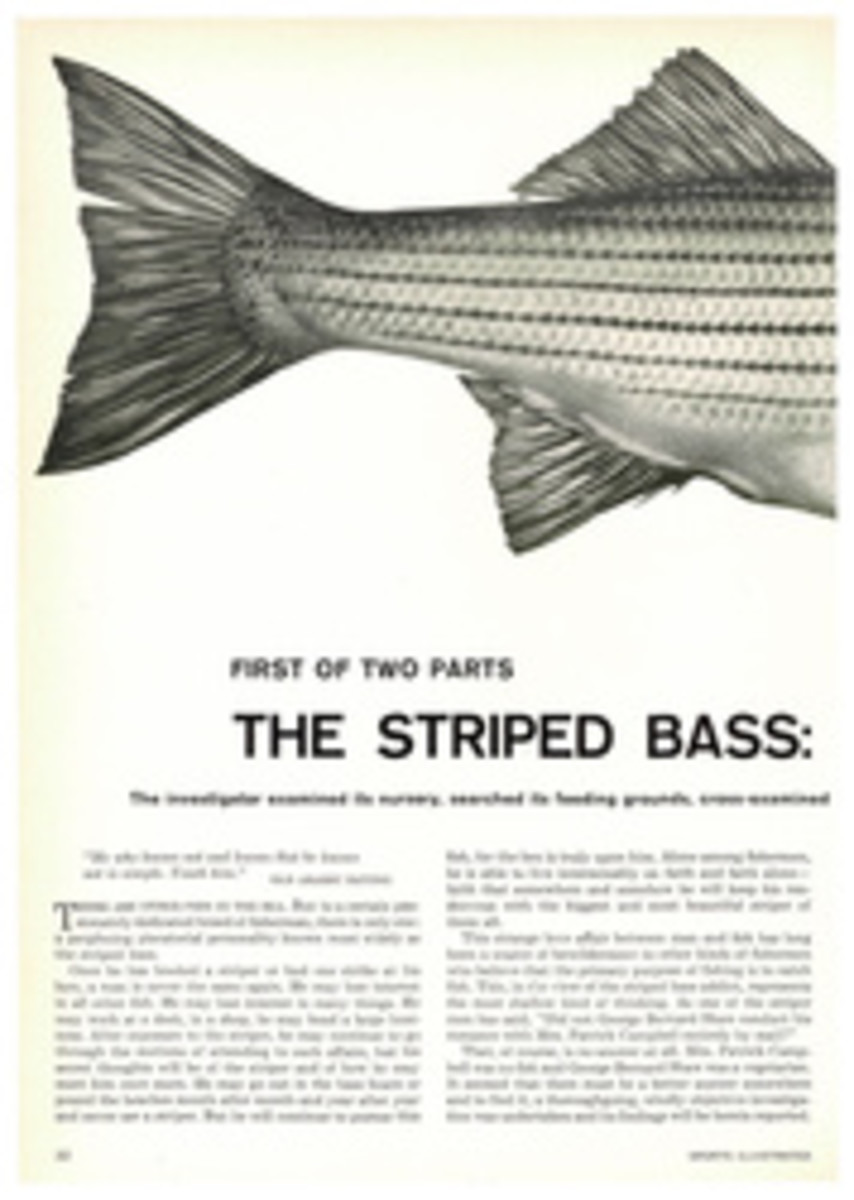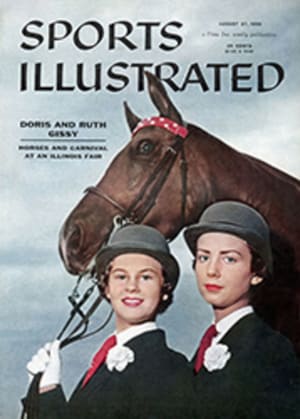
THE FOOT-LOOSE SPORTSMAN IN DETROIT
Although it was a Gaul, name of Sieur Antoine de la Mothe Cadillac, of Gascony, France, who started what is now the metropolis of Detroit, a man putting ashore there these un-Gallic days had better not expect brioches for breakfast. Breakfast, if not all life itself, has that handy, well-packaged Statler and Sheraton air, and it is no oddity that the two leading downtown hotels are named the Detroit Statler and the Sheraton-Cadillac. I had better tell you, in the interest of Detroiters suffering from high blood pressure, that the Sheraton was formerly called the Book-Cadillac, and is still referred to as The Book.
While on the subject of hotels, I would also like to refer you to the Whittier, an 850-room behemoth sitting on a gentle patch of green, overlooking the Detroit River. Any highwayman will take you there from downtown in exchange for $1.50. I say "highwayman" because in Detroit the taxicab meters drop at 40 cents, and the ride to the Whittier takes 10 minutes. Anyway, the view looks out to the river and to Belle Isle, Detroit's mid-river playground which is roughly three times the size of Monaco. Anybody with a riverside room has a dandy bedside vista of Detroit's boat races, and it isn't for nothing that the hotel's tiny dance and drink place is called the Gold Cup Room. I might also add that Belle Isle has a 3/4-mile-long beach, and should such a notion prove entrancing, the river races can be watched sitting in the water.
The boaty types forgather, too, at a nearby boîte known as Little Harry's. It was once, in the words of its present manager, a "high class blind pig where patrons would slip in the side door to eat Harry's ravioli and spaghetti." Harry, who was Harry Biagini, ran it legit from Repeal until he died in 1940 when it was taken over by three Detroit meat dealers. A red brick house with green shutters, it is divided inside into cozy paneled and papered rooms, rather reminiscent of Manhattan's "21," and the bar is gilded with light piano music in the evening.
Things get more sedate with the approach eastward to Grosse Pointe. At Al Green's on the fringe of the fashionable water-bordered strip, they approach downright gentility. The walls are soft green, the ambiance modern, quiet and familial.
FUN OVER YONDER
Most of the eating places downtown have a definite steak-and-chop lustiness about them, but the least lusty among them, and certainly one of the city's best restaurants, is the London Chop House. Tucked away in a downtown office building, the place is caked with worm-eaten chestnut walls, lined with leather banquettes and lighted with brass Finnish fixtures. The menu goes on and on and includes "A Mess of Fillets of Lake Perch," giant three-rib chops and over a hundred wines.
What with its proximity (it is only a tunnel ride away) and its peculiar location (you have to travel south to get there) there is a fateful fascination about visiting Canada which lies on the yonder (and south) bank of the winding Detroit River. The favorite place of excursion, once on the far side, seems to be Riverside, where the Thomas Inn, a huge and shabby establishment, provides anchorage for visiting boats, and "fish, frog, chicken and steak dinners" whether you come by land or sea. The locale has a certain historical flavor too, since it was the center for a booze and beer pipeline which ran to the Isle aux Peches just offshore and from there across to the prohibition-parched acres of neighboring Michigan.
Naturally there are all sorts of ways of seeing a car put together, with perhaps the most diversified facilities being offered at Ford's Rouge Plant where you can observe the process from iron ore to finished car in a two-hour free run-through I couldn't have gotten more tonic for the soul, though, than I did from a half-hour visit to General Motors' brand new Technical Center. The layout is a masterpiece of modern design by Eero Saarinen. All around are his low, trim buildings with startling panels of brick in 11 hues, not excluding orange, strawberry and shocking yellow. Weeping willows bend on gravel islands in a 22-acre artificial lake whose only other visible inhabitant is a massive, stainless steel water tower rising on three shining legs from the pond. Hidden fountains pump more water than Versailles, that other extravaganza which was in its heyday when Antoine Cadillac first paddled down the river to set up shop.

